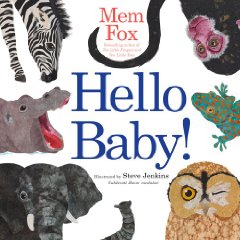
A. BIBLIOGRAPHY
Bryan, Ashley. 1992. SING TO THE SUN. New York, NY: Harper Collins. ISBN 060208295.
B. PLOT SUMMARY
A collection of poems and paintings celebrating the ups and downs of life. African American culture is highlighted in the original illustrations.
C. CRITICAL ANALYSIS (INCLUDLING CULTURAL MARKERS)
Bryan’s poetry is easy to read and follow for young readers. He writes in free verse style, with few words on each line. Fortunately, the brightly colored illustrations add more depth.
African American culture is a large focal point in Mr. Bryan’s work. Cultural markers include describing skin color “dark as cloves and cocoa brown” and hair “the braided beaded lady.” One entire poem, Beaded Braids, is written in admiration of braids, “Beaded lady, smiles, colors glow, through quiet grays – remarkable.”
The strength of family is seen with specific poems about Granny, Mom and Dad. Bryan’s grandmother comes alive with a vivid description of her selling fruit and putting baskets on her head. Language patterns like, “Want a lickin’? Mash me down, nuh, You t’ink me name chicken!” sound foreign and maybe from an island, like the Bahamas. Elements of nature, like rain and flowers, are also appreciated. “I’ll feed my little children, ‘cause they knows what feeds my soul.” Bryan notices the little things in the world and sees the beauty in all of it.
Bryan’s illustrations are also full of African American cultural markers. For example, his characters have strong facial features and various shades of brown skin tone. Tribal elments, like drums and headdresses are also seen in the illustrations.
D. REVIEW EXCERPTS
Lee Bennett Hopkins Poetry Award
“…Bryan does a magnificent job of conveying an evocative and palpable message to young listeners and readers. Illustrations in his distinguished style depict characteristics of African-American culture combined with flowers, birds, fish, rising suns, and full moons to create a splendid artistic work with wide appeal. SCHOOL LIBRARY JOURNAL
"The words are simple but they dance." BULLETIN OF THE CENTER FOR CHILDREN’S BOOKS
E. CONNECTIONS
Compare this book to others by Bryan like, LET IT SHINE and BEAUTIFUL BLACKBIRD.
Bryan’s somewhat autobiographical poem, The Artist, is a great poem for kids to discuss the therapeutic value of writing.





